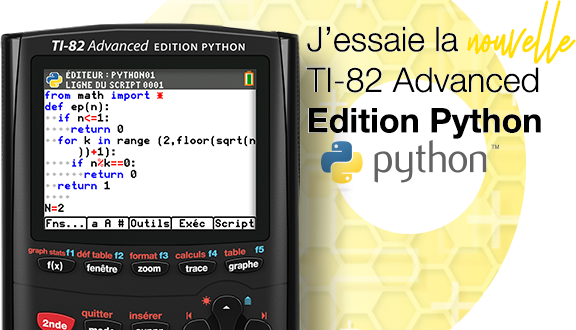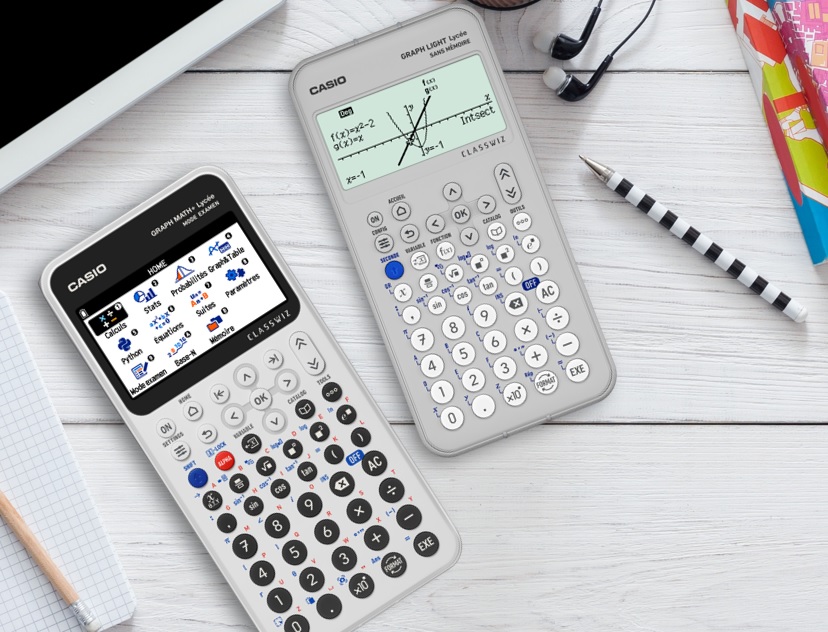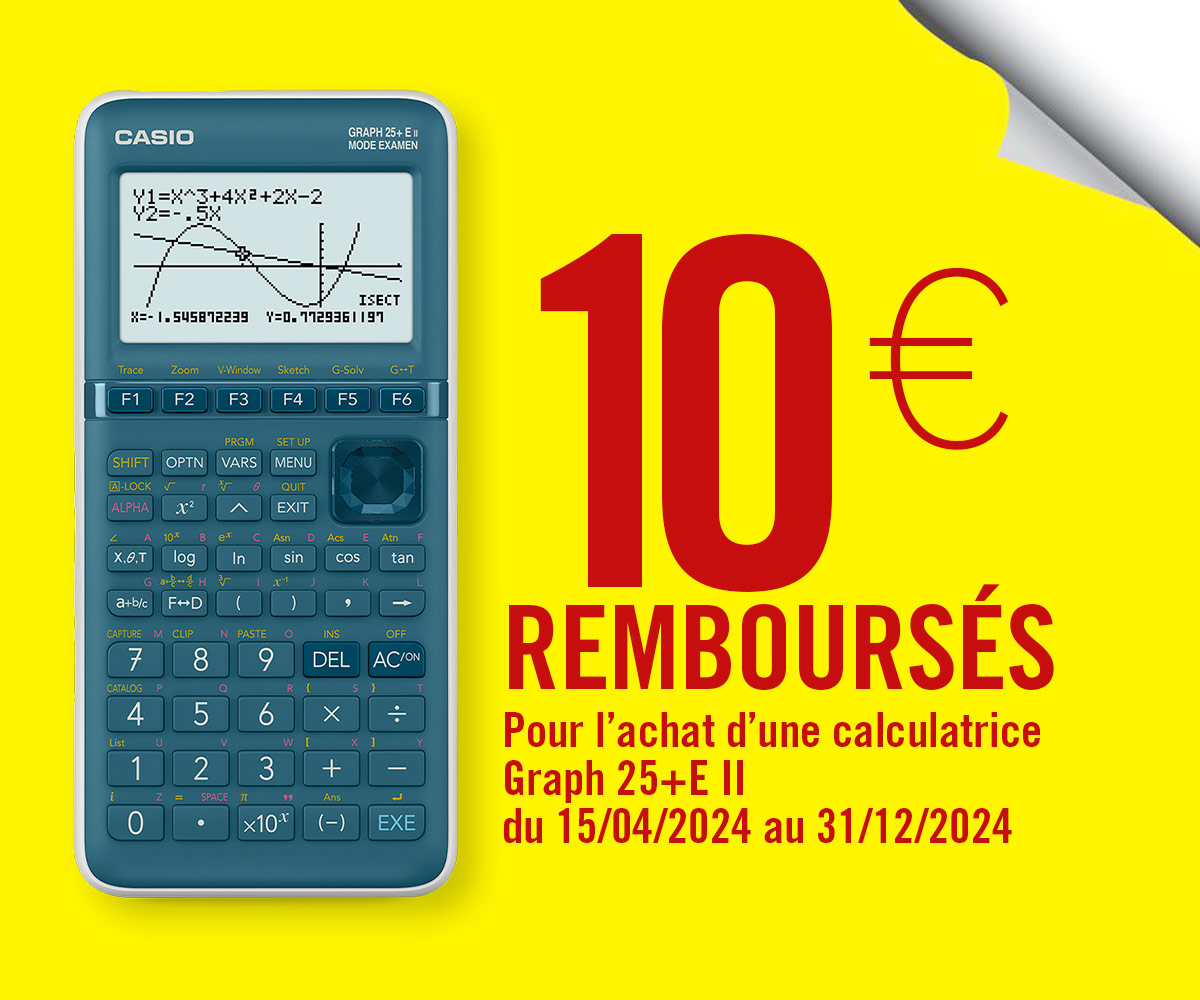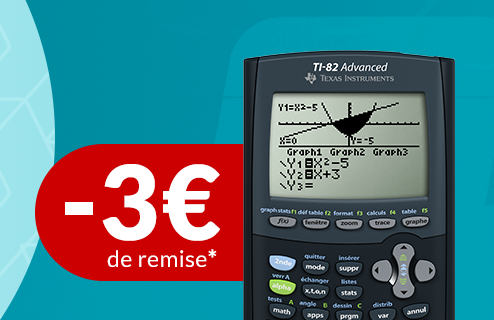RAO_CAP5_PROBLEMAS
Hiérarchie des fichiers
| Téléchargements | ||||||
| Fichiers créés en ligne | (33529) | |||||
| TI-Nspire | (22303) | |||||
| mViewer GX Creator Lua | (16802) | |||||
DownloadTélécharger
Actions
Vote :
Informations
Catégorie :Category: mViewer GX Creator Lua TI-Nspire
Auteur Author: wily luan
Type : Classeur 3.6
Page(s) : 27
Taille Size: 1.78 Mo MB
Mis en ligne Uploaded: 05/03/2015 - 18:56:17
Uploadeur Uploader: wily luan (Profil)
Téléchargements Downloads: 326
Visibilité Visibility: Archive publique
Shortlink : http://ti-pla.net/a166685
Type : Classeur 3.6
Page(s) : 27
Taille Size: 1.78 Mo MB
Mis en ligne Uploaded: 05/03/2015 - 18:56:17
Uploadeur Uploader: wily luan (Profil)
Téléchargements Downloads: 326
Visibilité Visibility: Archive publique
Shortlink : http://ti-pla.net/a166685
Description
526 CHAPTER 5 TWO-DEGREE-OF-FREEDOM SYSTEMS
5.5 Match the items in the two columns below:
1. Static coupling a. Only the mass matrix is nondiagonal
2. Inertial coupling b. The mass and damping matrices are nondiagonal
3. Velocity coupling c. Only the stiffness matrix is nondiagonal
4. Dynamic coupling d. Only the damping matrix is nondiagonal
5.6 Match the data given in the left column with the frequency equations given in the right col-
umn for a two-degree-of-freedom system governed by the equations of motion:
$
J0u1 - 2ktu1 - ktu2 = 0
$
2J0u2 - ktu1 + ktu2 = 0
1. J0 = 1, kt = 2 a. 32v4 - 20v2 + 1 = 0
2. J0 = 2, kt = 1 b. v4 - 5v2 + 2 = 0
3. J0 = 2, kt = 2 c. v4 - 10v2 + 8 = 0
4. J0 = 1, kt = 4 d. 8v4 - 10v2 + 1 = 0
5. J0 = 4, kt = 1 e. 2v4 - 5v2 + 1 = 0
PROBLEMS
Section 5.2 Equations of Motion for Forced Vibration
5.1 Derive the equations of motion of the system shown in Fig. 5.20.
5.2 Derive the equations of motion of the system shown in Fig. 5.21.
x2(t)
m2
c2 k2
x1(t)
m1
c1 k1
y(t) * input
y(t)
FIGURE 5.20
PROBLEMS 527
ct2 kt2 kt1
Mt
J2 J1
FIGURE 5.21
5.3 Two masses m 1 and m 2, each connected by two springs of stiffness k, are connected by a
rigid massless horizontal rod of length l as shown in Fig. 5.22. (a) Derive the equations of
motion of the system in terms of the vertical displacement of the C.G. of the system, x(t), and
the rotation about the C.G. of the system, u(t). (b) Find the natural frequencies of vibration
of the system for m 1 = 50 kg, m 2 = 200 kg, and k = 1000 N/m.
k k
l
O u(t)
m1
m2
x1(t) x(t) x2(t)
k Rigid, k
massless rod
FIGURE 5.22
5.4 A two-mass system consists of a piston of mass m 1, connected by two elastic springs, that
moves inside a tube as shown in Fig. 5.23. A pendulum of length l and end mass m 2 is con-
nected to the piston as shown in Fig. 5.23. (a) Derive the equations of motion of the system
in terms of x 1(t) and u(t). (b) Derive the equations of motion of the system in terms of the
x 1(t) and x 2(t). (c) Find the natural frequencies of vibration of the system.
Section 5.3 Free-Vibration Analysis of an Undamped System
5.5 Find the natural frequencies of the system shown in Fig. 5.24, with m1 = m, m2 = 2m,
k1 = k, and k2 = 2k. Determine the response of the system when k = 1000 N/m, m = 20 kg,
and the initial values of the displacements of the masses m1 and m2 are 1 and -1, respectively.
528 CHAPTER 5 TWO-DEGREE-OF-FREEDOM SYSTEMS
x1
k1 m k2
l
u(t)
m2
x2
FIGURE 5.23
Base
k1
m1
x1(t)
k2
m2
x2(t)
FIGURE 5.24
5.6 Set up the differential equations of motion for the double pendulum shown in Fig. 5.25, using
the coordinates x1 and x2 and assuming small amplitudes. Find the natural frequencies, the
ratios of amplitudes, and the locations of nodes for the two modes of vibration when
m1 = m2 = m and l1 = l2 = l.
5.7 Determine the natural modes of the system shown in Fig. 5.26 when k1 = k2 = k3 = k.
5.8 A machine tool, having a mass of m = 1000 kg and a mass moment of inertia of
J0 = 300 kg-m2, is supported on elastic supports, as shown in Fig. 5.27. If the stiffnesses of
the supports are given by k1 = 3000 N/mm and k2 = 2000 N/mm, and the supports are
located at l1 = 0.5 m and l2 = 0.8 m, find the natural frequencies and mode shapes of the
machine tool.
PROBLEMS 529
l1 y1
u1
m1
l2
u2
x1
m2
x2
FIGURE 5.25
y k1
k2
45
45
m x
k3
FIGURE 5.26
m, J0
k1 k2
l1 l2
FIGURE 5.27
530 CHAPTER 5 TWO-DEGREE-OF-FREEDOM SYSTEMS
5.9 An electric overhead traveling crane, consisting of a girder, trolley, and wire rope, is shown
in Fig. 5.28. The girder has a flexural rigidity (EI) of 6 * 1012 lb-in.2 and a span (L) of 30 ft.
The rope is made of steel and has a length (l) of 20 ft. The weights of the trolley and the load
lifted are 8000 lb and 2000 lb, respectively. Find the area of cross section of the rope such
that the fundamental natural frequency is greater than 20 Hz.
Girder;
Trolley
kg , E, I m1
kg
Wire
rope
k m1
Load
m2 lifted k
m2
(a) (b)
FIGURE 5.28
5.10 An overhead traveling crane can be modeled as indicated in Fig. 5.28. Assuming that the girder
has a span of 40 m, an area moment of inertia (I) of 0.02 m4, and a modulus of elasticity (E) of
2.06 * 1011 N/m2, the trolley has a mass (m1) of 1000 kg, the load being lifted has a mass
(m2) of 5000 kg, and the cable through which the mass (m2) is lifted has a stiffness (k) of
3.0 * 105 N/m, determine the natural frequencies and mode shapes of the system.
5.11 The drilling machine shown in Fig. 5.29(a) can be modeled as a two-degree-of-freedom sys-
tem as indicated in Fig. 5.29(b). Since a transverse force applied to mass m1 or mass m2
causes both the masses to deflect, the system exhibits elastic coupling. The bending stiff-
nesses of the column are given by (see Section 6.4 for the definition of stiffness influence
coefficients)
768 EI 240 EI 96 EI
k11 = , k12 = k21 = - , k22 =
7 l3 7 l3 7 l3
Determine the natural frequencies of the drilling machine.
5.12 One of the wheels and leaf springs of an automobile, traveling over a rough road, is shown in
Fig. 5.30. For simplicity, all the wheels can be assumed to be identical and the system can be
idealized as shown in Fig. 5.31. The automobile has a mass of m1 = 1000 kg and the leaf
springs have a total stiffness of k1 = 400 kN/m. The wheels and axles have a mass of
m2 = 300 kg and the tires have a stiffness of k2 = 500 kN/m. If the road surface varies sinu-
soidally with an amplitude of Y = 0.1 m and a period of l = 6 m, find the critical velocities
of the automobile.
PROBLEMS 531
x2(t)
m2
x1(t)
m1 l
l
Column 2
(a) (b)
FIGURE 5.29 (Photo courtesy of Atlas-Clausing
division.)
FIGURE 5.30
5.13 Derive the equations of motion of the double pendulum shown in Fig. 5.25, using the coordi-
nates u1 and u2. Also find the natural frequencies and mode shapes of the system for
m1 = m2 = m and l1 = l2 = l.
5.14 Find the natural frequencies and mode shapes of the system shown in Fig. 5.24 for
m1 = m2 = m and k1 = k2 = k.
T !
5.15 The normal modes of a two-degree-of-freedom system are orthogonal if X(1) [m] X(2) = 0.
Prove that the mode shapes of the system shown in Fig. 5.5(a) are orthogonal.
5.16 Find the natural frequencies of the system shown in Fig. 5.6 for k1 = 300 N/m,
k2 = 500 N/m, k3 = 200 N/m, m1 = 2 kg, and m2 = 1 kg.
532 CHAPTER 5 TWO-DEGREE-OF-FREEDOM SYSTEMS
m1 (Automobile) v
k1 (Leaf springs)
m2 (Wheels and axles)
k2 (Tires)
Y
l
FIGURE 5.31
5.17 Find the natural frequencies and mode shapes of the system shown in Fig. 5.24 for
m1 = m2 = 1 kg, k1 = 2000 N/m, and k2 = 6000 N/m.
5.18 Derive expressions for the displacements of the masses in Fig. 5.6 when mi = 25 lb-sec 2/in.,
i = 1, 2, and ki = 50,000 lb/in., i = 1, 2, 3.
5.19 For the system shown in Fig. 5.6, m1 = 1 kg, m2 = 2 kg, k1 = 2000 N/m, k2 = 1000 N/m,
k3 = 3000 N/m, and an initial velocity of 20 m/s is imparted to mass m1. Find the resulting
motion of the two masses.
5.20 For Problem 5.17, calculate x1(t) and x2(t) for the following initial conditions:
# #
a. x1(0) = 0.2, x1(0) = x2(0) = x2(0) = 0.
# #
b. x1(0) = 0.2, x1(0) = x2(0) = 0, x2(0) = 5.0.
5.21 A two-story building frame is modeled as shown in Fig. 5.32. The girders are assumed to be
rigid, and the columns have flexural rigidities EI1 and EI2, with negligible masses. The stiff-
ness of each column can be computed as
x2(t)
m2
F2(t)
EI2 EI2 h2
m1 x1(t)
F1(t)
EI1 EI1 h1
FIGURE 5.32
PROBLEMS 533
24EIi
, i = 1, 2
h3i
For m1 = 2m, m2 = m, h1 = h2 = h, and EI1 = EI2 = EI, determine the natural frequen-
cies and mode shapes of the frame.
5.22 Figure 5.33 shows a system of two masses attached to a tightly stretched string, fixed at both
ends. Determine the natural frequencies and mode shapes of the system for m1 = m2 = m
and l1 = l2 = l3 = l.
l1
m1
l2
m2
l3
FIGURE 5.33
5.23 Find the normal modes of the two-story building shown in Fig. 5.32 when m1 = 3m,
m2 = m, k1 = 3k, and k2 = k, where k1 and k2 represent the total equivalent stiffnesses of
the lower and upper columns, respectively.
5.24 A hoisting drum, having a weight W1, is mounted at the end of a steel cantilever beam of
thickness t, width a, and length b, as shown in Fig. 5.34. The wire rope is made of steel and
has a diameter of d and a suspended length of l. If the load hanging at the end of the rope is
W2, derive expressions for the natural frequencies of the system.
t
W1
b a
l
d
W2 W2
(a) (b)
FIGURE 5.34
534 CHAPTER 5 TWO-DEGREE-OF-FREEDOM SYSTEMS
5.25 Determine the initial conditions of the system shown in Fig. 5.24 for which the system
vibrates only at its lowest natural frequency for the following data: k1 = k, k2 = 2k,
m1 = m, m2 = 2m.
5.26 The system shown in Fig. 5.24 is initially disturbed by holding the mass m1 stationary and
giving the mass m2 a downward displacement of 0.1 m. Discuss the nature of the resulting
motion of the system.
5.27 Design the cantilever beam supporting the hoisting drum and the wire rope carrying the load
in Problem 5.24 in order to have the natural frequencies of the system greater than 10 Hz
when W1 = 1000 lb and W2 = 500 lb, b = 30 in., and l = 60 in.
5.28 Find the free-vibration response of the two-degree-of-freedom system shown in Fig. 5.6 with
#
n = 1, k = 8, and m = 2 for the initial conditions x1(0) = 1, x2(0) = x1(0) = 0, and
#
x2(0) = 1.
5.29 Find the free-vibration response of the two-degree-of-freedom system shown in Fig. 5.6
#
with n = 1, k = 8, and m = 2 for the initial conditions x1(0) = 1 and x 2(0) = x1(0) =
#
x2(0) = 0.
5.30 Using the results of Example 5.1, verify that the mode shapes satisfy the following relations,
known as orthogonality relations:
! T ! ! T ! ! T !
X(1) X(2) = 0, X(1) [m]X(2) = 0, X(1) [m]X(1) = c1 = constant
! T !
X(2) [m]X(2) = c2 = constant
! T ! ! T !
X(1) [k]X(1) = c1v21 , X(2) [k]X(2) = c2v22
5.31 Two identical pendulums, each with mass m and length l, are connected by a spring of stiff-
ness k at a distance d from the fixed end, as shown in Fig. 5.35.
a. Derive the equations of motion of the two masses.
b. Find the natural frequencies and mode shapes of the system.
c. Find the free-vibration
# response
# of the system for the initial conditions u1(0) = a,
u2(0) = 0, u1(0) = 0, and u2(0) = 0.
d. Determine the condition(s) under which the system exhibits a beating phenomenon.
P Q
d
u1(t) u2(t)
l
k
m m
FIGURE 5.35
5.32 The motor-pump system shown in Fig. 5.36(a) is modeled as a rigid bar of mass m = 50 kg
and mass moment of inertia J0 = 100 kg-m2. The foundation of the system can be replaced
by two springs of stiffness k 1 = 500 N/m and k 2 = 200 N/m. Determine the natural fre-
quencies of the system.
PROBLEMS 535
u(t) C.G. m, J0
Motor Pump
5.5 Match the items in the two columns below:
1. Static coupling a. Only the mass matrix is nondiagonal
2. Inertial coupling b. The mass and damping matrices are nondiagonal
3. Velocity coupling c. Only the stiffness matrix is nondiagonal
4. Dynamic coupling d. Only the damping matrix is nondiagonal
5.6 Match the data given in the left column with the frequency equations given in the right col-
umn for a two-degree-of-freedom system governed by the equations of motion:
$
J0u1 - 2ktu1 - ktu2 = 0
$
2J0u2 - ktu1 + ktu2 = 0
1. J0 = 1, kt = 2 a. 32v4 - 20v2 + 1 = 0
2. J0 = 2, kt = 1 b. v4 - 5v2 + 2 = 0
3. J0 = 2, kt = 2 c. v4 - 10v2 + 8 = 0
4. J0 = 1, kt = 4 d. 8v4 - 10v2 + 1 = 0
5. J0 = 4, kt = 1 e. 2v4 - 5v2 + 1 = 0
PROBLEMS
Section 5.2 Equations of Motion for Forced Vibration
5.1 Derive the equations of motion of the system shown in Fig. 5.20.
5.2 Derive the equations of motion of the system shown in Fig. 5.21.
x2(t)
m2
c2 k2
x1(t)
m1
c1 k1
y(t) * input
y(t)
FIGURE 5.20
PROBLEMS 527
ct2 kt2 kt1
Mt
J2 J1
FIGURE 5.21
5.3 Two masses m 1 and m 2, each connected by two springs of stiffness k, are connected by a
rigid massless horizontal rod of length l as shown in Fig. 5.22. (a) Derive the equations of
motion of the system in terms of the vertical displacement of the C.G. of the system, x(t), and
the rotation about the C.G. of the system, u(t). (b) Find the natural frequencies of vibration
of the system for m 1 = 50 kg, m 2 = 200 kg, and k = 1000 N/m.
k k
l
O u(t)
m1
m2
x1(t) x(t) x2(t)
k Rigid, k
massless rod
FIGURE 5.22
5.4 A two-mass system consists of a piston of mass m 1, connected by two elastic springs, that
moves inside a tube as shown in Fig. 5.23. A pendulum of length l and end mass m 2 is con-
nected to the piston as shown in Fig. 5.23. (a) Derive the equations of motion of the system
in terms of x 1(t) and u(t). (b) Derive the equations of motion of the system in terms of the
x 1(t) and x 2(t). (c) Find the natural frequencies of vibration of the system.
Section 5.3 Free-Vibration Analysis of an Undamped System
5.5 Find the natural frequencies of the system shown in Fig. 5.24, with m1 = m, m2 = 2m,
k1 = k, and k2 = 2k. Determine the response of the system when k = 1000 N/m, m = 20 kg,
and the initial values of the displacements of the masses m1 and m2 are 1 and -1, respectively.
528 CHAPTER 5 TWO-DEGREE-OF-FREEDOM SYSTEMS
x1
k1 m k2
l
u(t)
m2
x2
FIGURE 5.23
Base
k1
m1
x1(t)
k2
m2
x2(t)
FIGURE 5.24
5.6 Set up the differential equations of motion for the double pendulum shown in Fig. 5.25, using
the coordinates x1 and x2 and assuming small amplitudes. Find the natural frequencies, the
ratios of amplitudes, and the locations of nodes for the two modes of vibration when
m1 = m2 = m and l1 = l2 = l.
5.7 Determine the natural modes of the system shown in Fig. 5.26 when k1 = k2 = k3 = k.
5.8 A machine tool, having a mass of m = 1000 kg and a mass moment of inertia of
J0 = 300 kg-m2, is supported on elastic supports, as shown in Fig. 5.27. If the stiffnesses of
the supports are given by k1 = 3000 N/mm and k2 = 2000 N/mm, and the supports are
located at l1 = 0.5 m and l2 = 0.8 m, find the natural frequencies and mode shapes of the
machine tool.
PROBLEMS 529
l1 y1
u1
m1
l2
u2
x1
m2
x2
FIGURE 5.25
y k1
k2
45
45
m x
k3
FIGURE 5.26
m, J0
k1 k2
l1 l2
FIGURE 5.27
530 CHAPTER 5 TWO-DEGREE-OF-FREEDOM SYSTEMS
5.9 An electric overhead traveling crane, consisting of a girder, trolley, and wire rope, is shown
in Fig. 5.28. The girder has a flexural rigidity (EI) of 6 * 1012 lb-in.2 and a span (L) of 30 ft.
The rope is made of steel and has a length (l) of 20 ft. The weights of the trolley and the load
lifted are 8000 lb and 2000 lb, respectively. Find the area of cross section of the rope such
that the fundamental natural frequency is greater than 20 Hz.
Girder;
Trolley
kg , E, I m1
kg
Wire
rope
k m1
Load
m2 lifted k
m2
(a) (b)
FIGURE 5.28
5.10 An overhead traveling crane can be modeled as indicated in Fig. 5.28. Assuming that the girder
has a span of 40 m, an area moment of inertia (I) of 0.02 m4, and a modulus of elasticity (E) of
2.06 * 1011 N/m2, the trolley has a mass (m1) of 1000 kg, the load being lifted has a mass
(m2) of 5000 kg, and the cable through which the mass (m2) is lifted has a stiffness (k) of
3.0 * 105 N/m, determine the natural frequencies and mode shapes of the system.
5.11 The drilling machine shown in Fig. 5.29(a) can be modeled as a two-degree-of-freedom sys-
tem as indicated in Fig. 5.29(b). Since a transverse force applied to mass m1 or mass m2
causes both the masses to deflect, the system exhibits elastic coupling. The bending stiff-
nesses of the column are given by (see Section 6.4 for the definition of stiffness influence
coefficients)
768 EI 240 EI 96 EI
k11 = , k12 = k21 = - , k22 =
7 l3 7 l3 7 l3
Determine the natural frequencies of the drilling machine.
5.12 One of the wheels and leaf springs of an automobile, traveling over a rough road, is shown in
Fig. 5.30. For simplicity, all the wheels can be assumed to be identical and the system can be
idealized as shown in Fig. 5.31. The automobile has a mass of m1 = 1000 kg and the leaf
springs have a total stiffness of k1 = 400 kN/m. The wheels and axles have a mass of
m2 = 300 kg and the tires have a stiffness of k2 = 500 kN/m. If the road surface varies sinu-
soidally with an amplitude of Y = 0.1 m and a period of l = 6 m, find the critical velocities
of the automobile.
PROBLEMS 531
x2(t)
m2
x1(t)
m1 l
l
Column 2
(a) (b)
FIGURE 5.29 (Photo courtesy of Atlas-Clausing
division.)
FIGURE 5.30
5.13 Derive the equations of motion of the double pendulum shown in Fig. 5.25, using the coordi-
nates u1 and u2. Also find the natural frequencies and mode shapes of the system for
m1 = m2 = m and l1 = l2 = l.
5.14 Find the natural frequencies and mode shapes of the system shown in Fig. 5.24 for
m1 = m2 = m and k1 = k2 = k.
T !
5.15 The normal modes of a two-degree-of-freedom system are orthogonal if X(1) [m] X(2) = 0.
Prove that the mode shapes of the system shown in Fig. 5.5(a) are orthogonal.
5.16 Find the natural frequencies of the system shown in Fig. 5.6 for k1 = 300 N/m,
k2 = 500 N/m, k3 = 200 N/m, m1 = 2 kg, and m2 = 1 kg.
532 CHAPTER 5 TWO-DEGREE-OF-FREEDOM SYSTEMS
m1 (Automobile) v
k1 (Leaf springs)
m2 (Wheels and axles)
k2 (Tires)
Y
l
FIGURE 5.31
5.17 Find the natural frequencies and mode shapes of the system shown in Fig. 5.24 for
m1 = m2 = 1 kg, k1 = 2000 N/m, and k2 = 6000 N/m.
5.18 Derive expressions for the displacements of the masses in Fig. 5.6 when mi = 25 lb-sec 2/in.,
i = 1, 2, and ki = 50,000 lb/in., i = 1, 2, 3.
5.19 For the system shown in Fig. 5.6, m1 = 1 kg, m2 = 2 kg, k1 = 2000 N/m, k2 = 1000 N/m,
k3 = 3000 N/m, and an initial velocity of 20 m/s is imparted to mass m1. Find the resulting
motion of the two masses.
5.20 For Problem 5.17, calculate x1(t) and x2(t) for the following initial conditions:
# #
a. x1(0) = 0.2, x1(0) = x2(0) = x2(0) = 0.
# #
b. x1(0) = 0.2, x1(0) = x2(0) = 0, x2(0) = 5.0.
5.21 A two-story building frame is modeled as shown in Fig. 5.32. The girders are assumed to be
rigid, and the columns have flexural rigidities EI1 and EI2, with negligible masses. The stiff-
ness of each column can be computed as
x2(t)
m2
F2(t)
EI2 EI2 h2
m1 x1(t)
F1(t)
EI1 EI1 h1
FIGURE 5.32
PROBLEMS 533
24EIi
, i = 1, 2
h3i
For m1 = 2m, m2 = m, h1 = h2 = h, and EI1 = EI2 = EI, determine the natural frequen-
cies and mode shapes of the frame.
5.22 Figure 5.33 shows a system of two masses attached to a tightly stretched string, fixed at both
ends. Determine the natural frequencies and mode shapes of the system for m1 = m2 = m
and l1 = l2 = l3 = l.
l1
m1
l2
m2
l3
FIGURE 5.33
5.23 Find the normal modes of the two-story building shown in Fig. 5.32 when m1 = 3m,
m2 = m, k1 = 3k, and k2 = k, where k1 and k2 represent the total equivalent stiffnesses of
the lower and upper columns, respectively.
5.24 A hoisting drum, having a weight W1, is mounted at the end of a steel cantilever beam of
thickness t, width a, and length b, as shown in Fig. 5.34. The wire rope is made of steel and
has a diameter of d and a suspended length of l. If the load hanging at the end of the rope is
W2, derive expressions for the natural frequencies of the system.
t
W1
b a
l
d
W2 W2
(a) (b)
FIGURE 5.34
534 CHAPTER 5 TWO-DEGREE-OF-FREEDOM SYSTEMS
5.25 Determine the initial conditions of the system shown in Fig. 5.24 for which the system
vibrates only at its lowest natural frequency for the following data: k1 = k, k2 = 2k,
m1 = m, m2 = 2m.
5.26 The system shown in Fig. 5.24 is initially disturbed by holding the mass m1 stationary and
giving the mass m2 a downward displacement of 0.1 m. Discuss the nature of the resulting
motion of the system.
5.27 Design the cantilever beam supporting the hoisting drum and the wire rope carrying the load
in Problem 5.24 in order to have the natural frequencies of the system greater than 10 Hz
when W1 = 1000 lb and W2 = 500 lb, b = 30 in., and l = 60 in.
5.28 Find the free-vibration response of the two-degree-of-freedom system shown in Fig. 5.6 with
#
n = 1, k = 8, and m = 2 for the initial conditions x1(0) = 1, x2(0) = x1(0) = 0, and
#
x2(0) = 1.
5.29 Find the free-vibration response of the two-degree-of-freedom system shown in Fig. 5.6
#
with n = 1, k = 8, and m = 2 for the initial conditions x1(0) = 1 and x 2(0) = x1(0) =
#
x2(0) = 0.
5.30 Using the results of Example 5.1, verify that the mode shapes satisfy the following relations,
known as orthogonality relations:
! T ! ! T ! ! T !
X(1) X(2) = 0, X(1) [m]X(2) = 0, X(1) [m]X(1) = c1 = constant
! T !
X(2) [m]X(2) = c2 = constant
! T ! ! T !
X(1) [k]X(1) = c1v21 , X(2) [k]X(2) = c2v22
5.31 Two identical pendulums, each with mass m and length l, are connected by a spring of stiff-
ness k at a distance d from the fixed end, as shown in Fig. 5.35.
a. Derive the equations of motion of the two masses.
b. Find the natural frequencies and mode shapes of the system.
c. Find the free-vibration
# response
# of the system for the initial conditions u1(0) = a,
u2(0) = 0, u1(0) = 0, and u2(0) = 0.
d. Determine the condition(s) under which the system exhibits a beating phenomenon.
P Q
d
u1(t) u2(t)
l
k
m m
FIGURE 5.35
5.32 The motor-pump system shown in Fig. 5.36(a) is modeled as a rigid bar of mass m = 50 kg
and mass moment of inertia J0 = 100 kg-m2. The foundation of the system can be replaced
by two springs of stiffness k 1 = 500 N/m and k 2 = 200 N/m. Determine the natural fre-
quencies of the system.
PROBLEMS 535
u(t) C.G. m, J0
Motor Pump

























